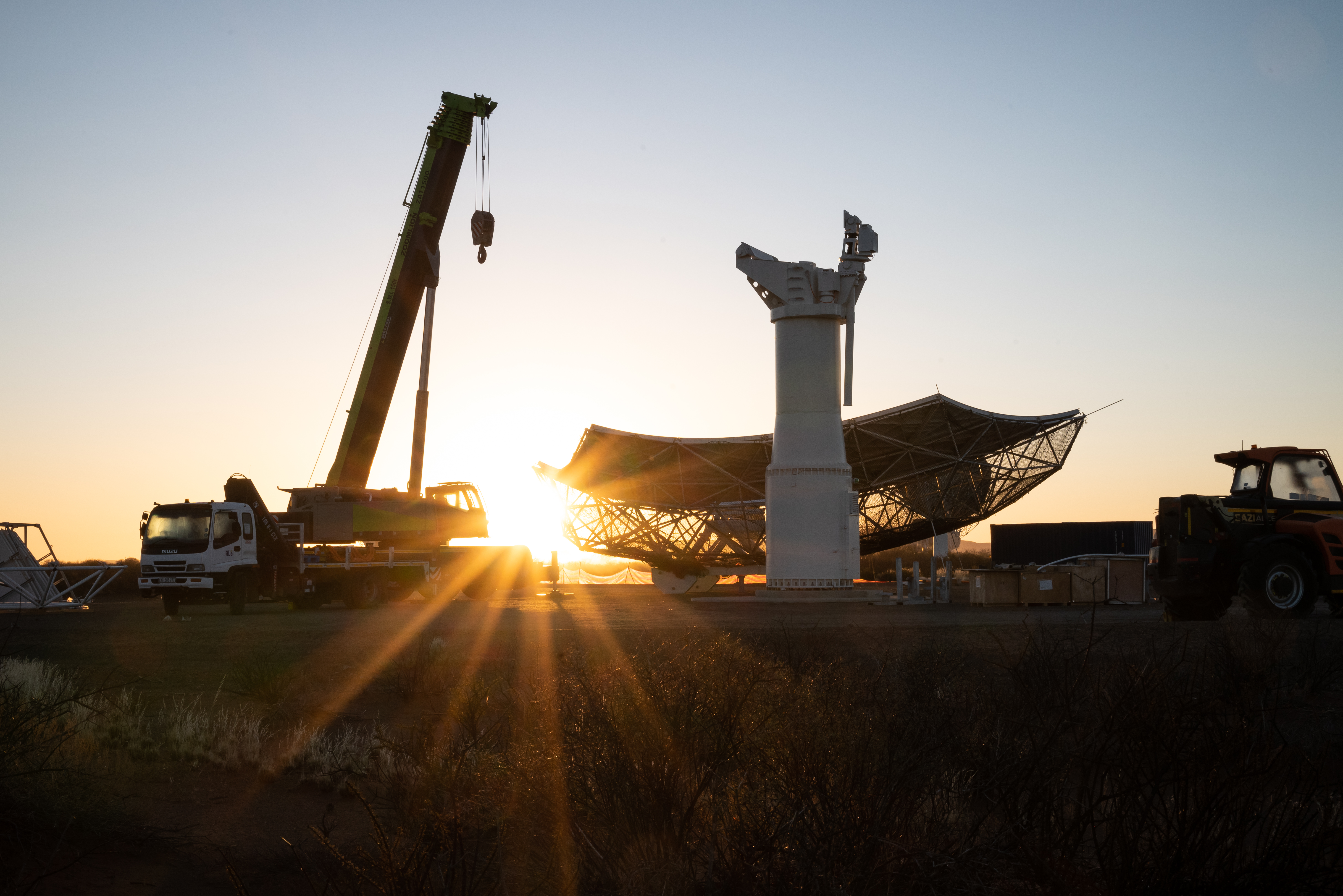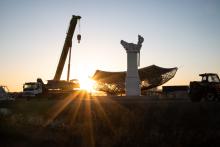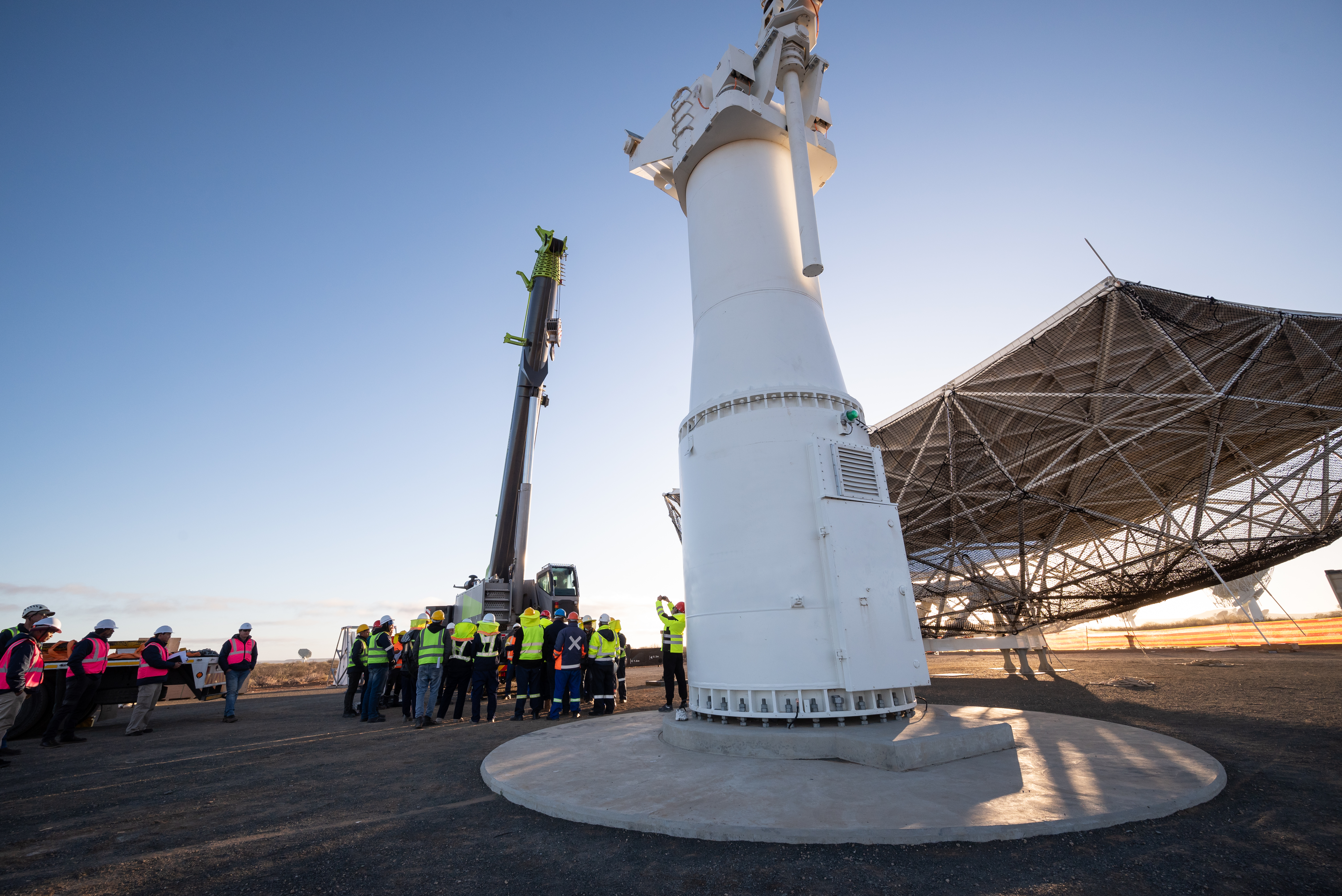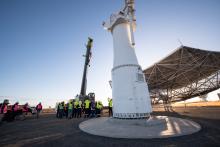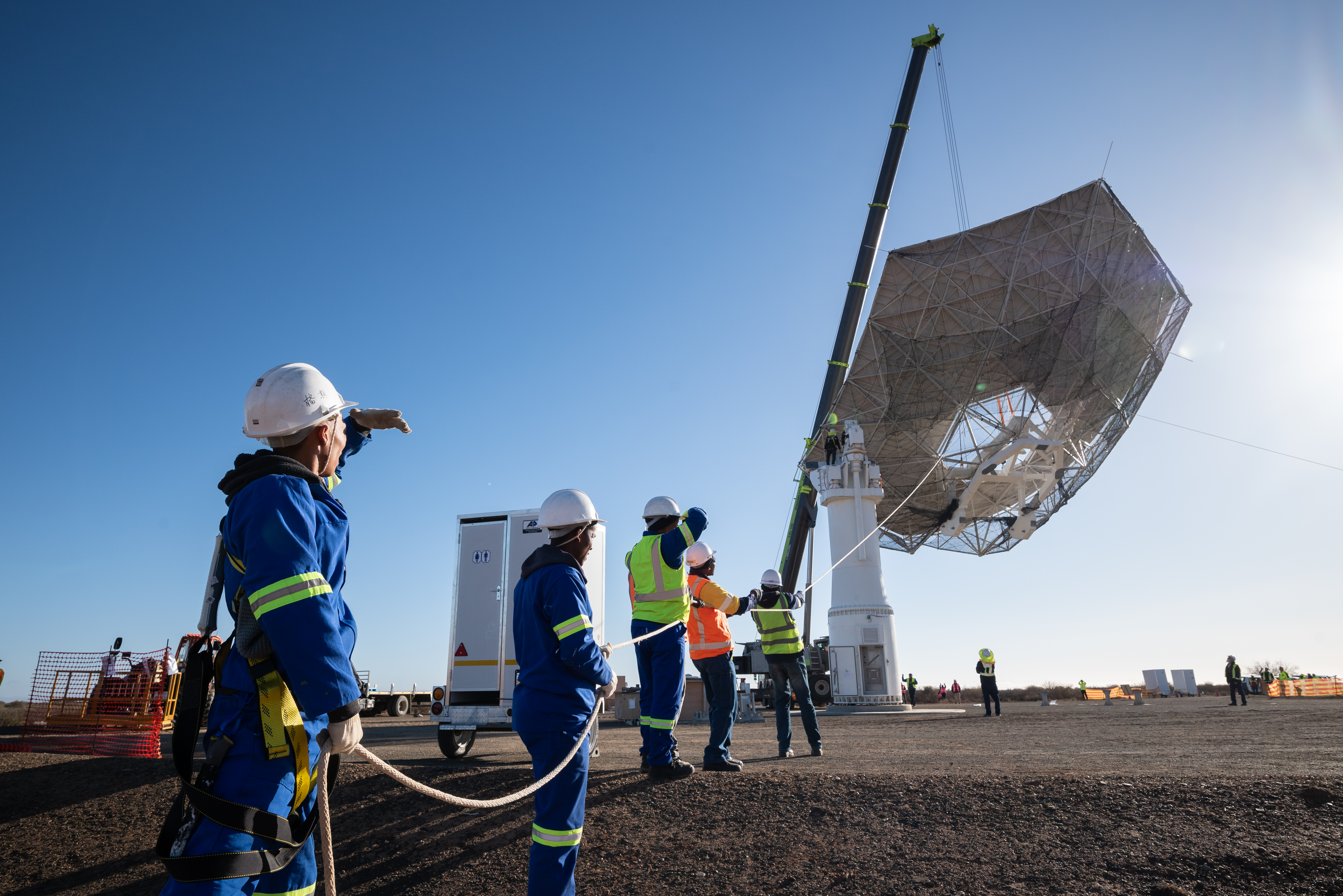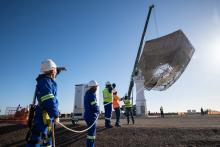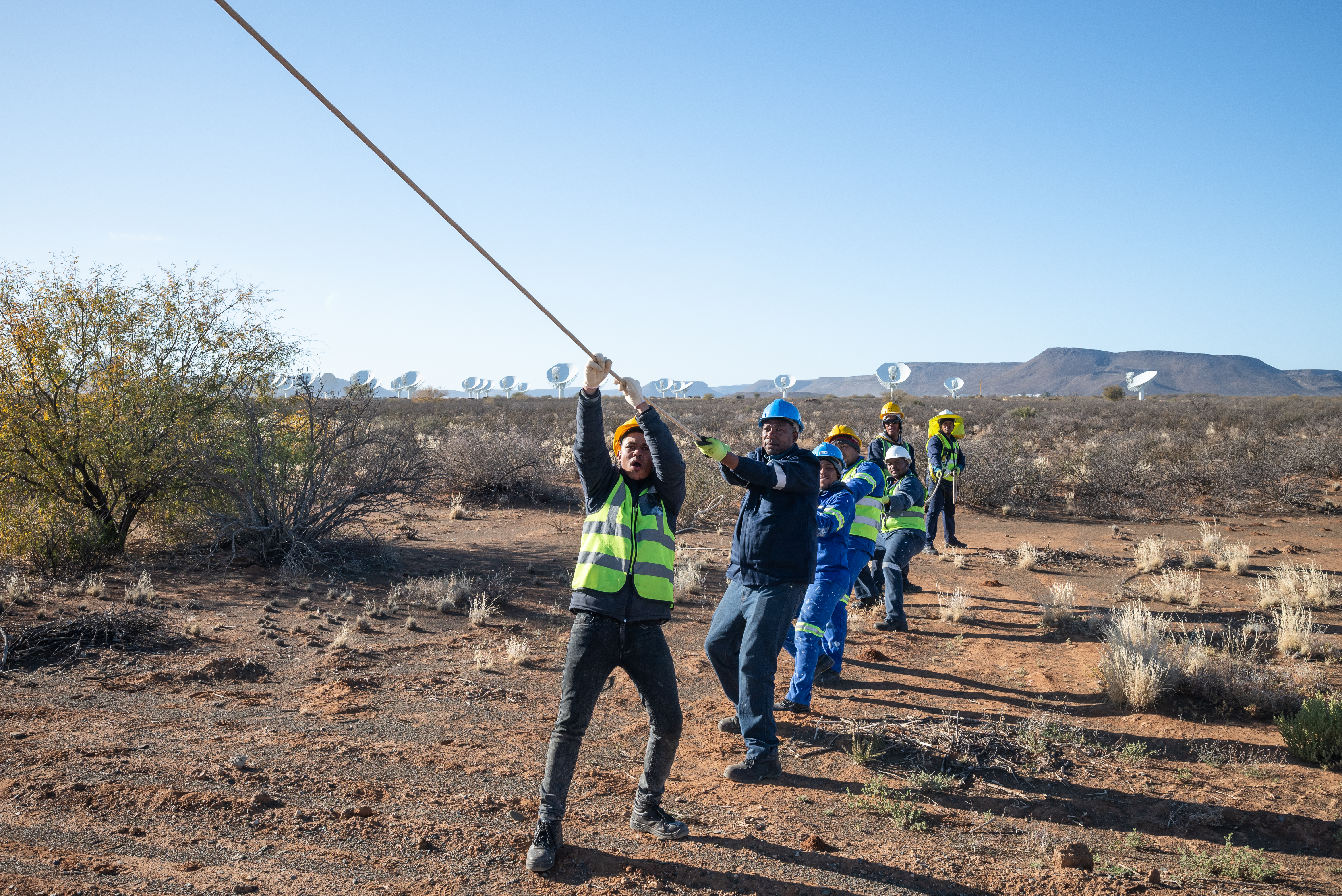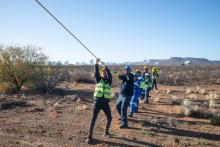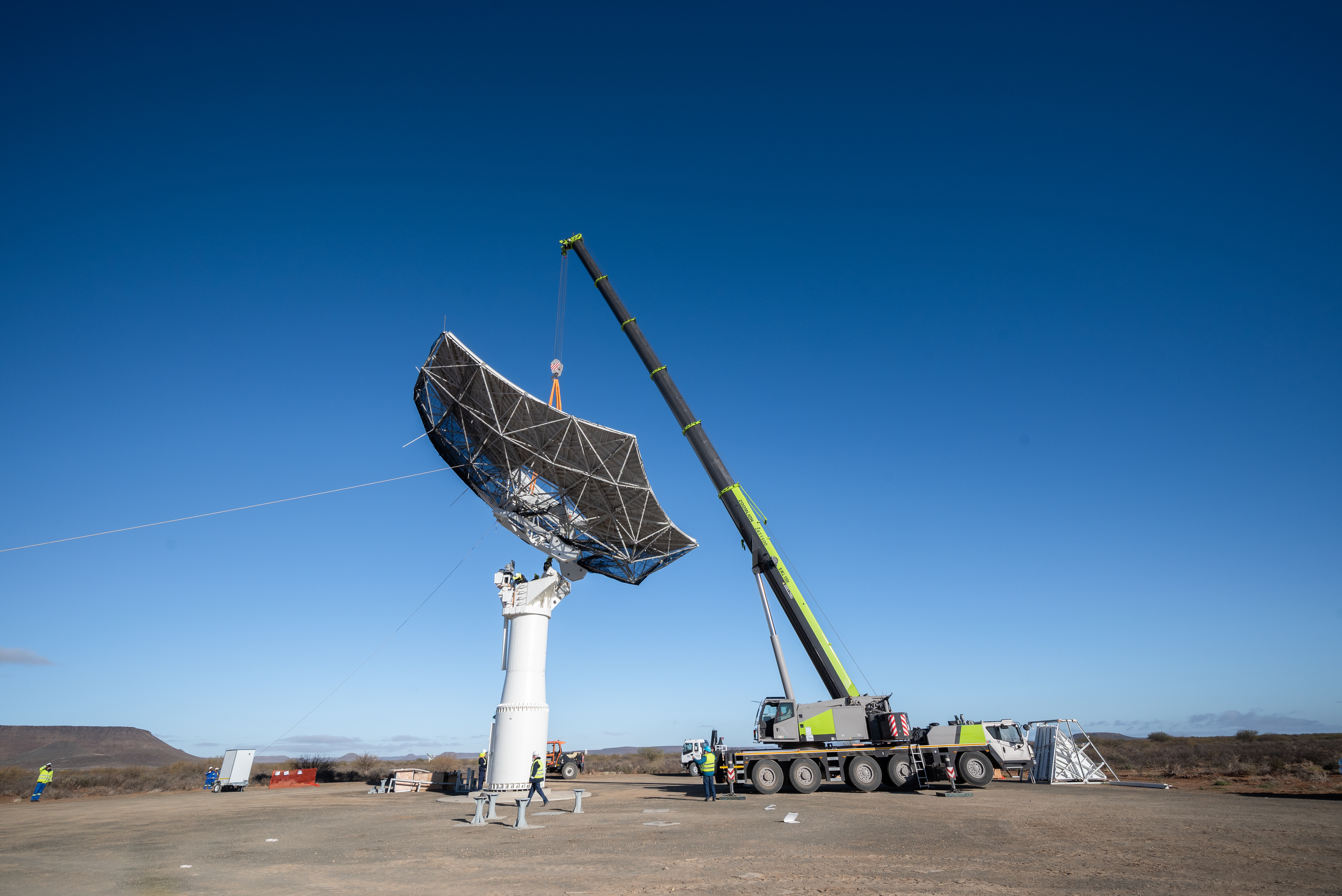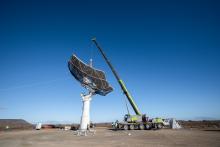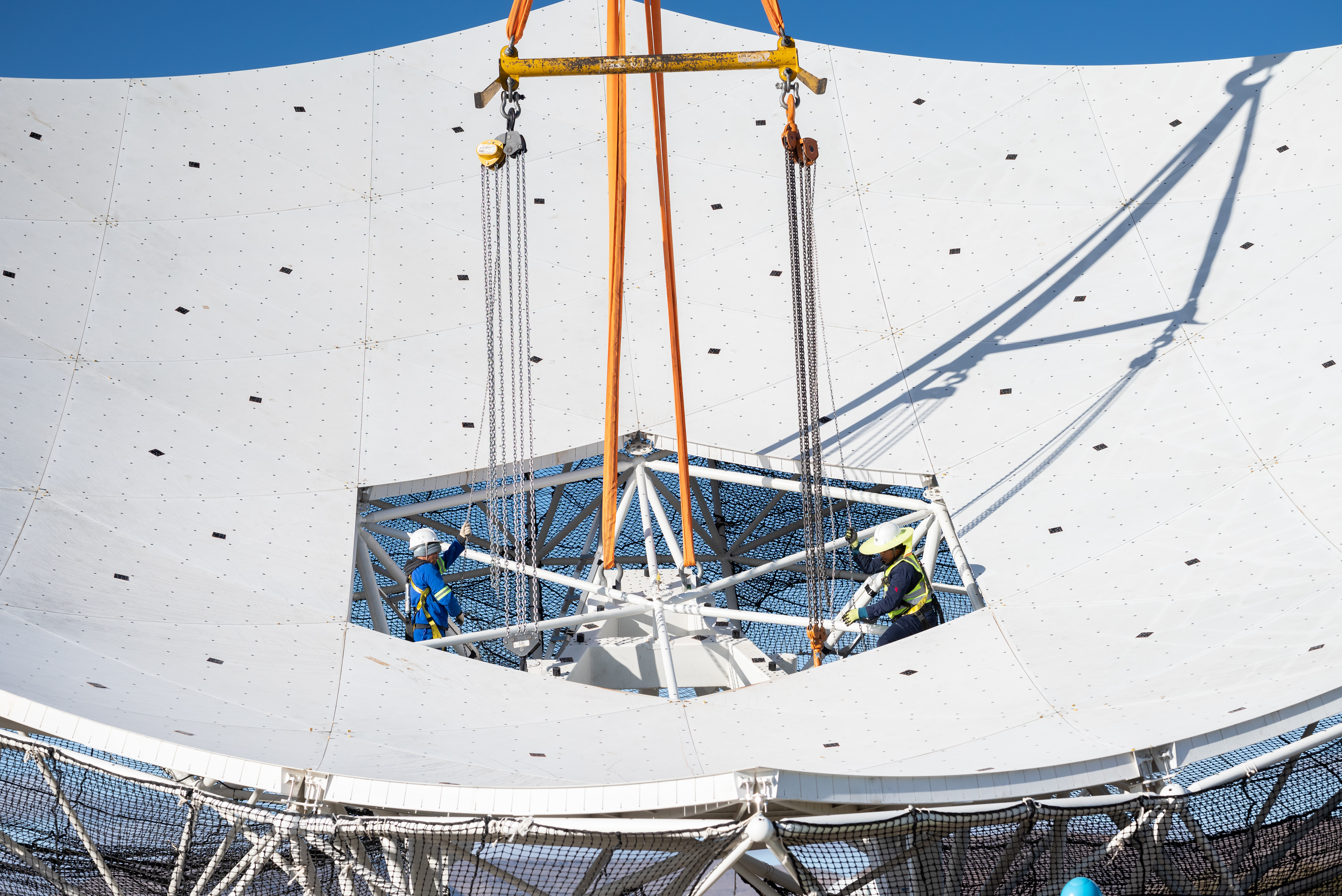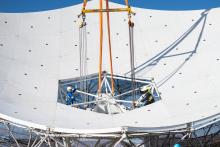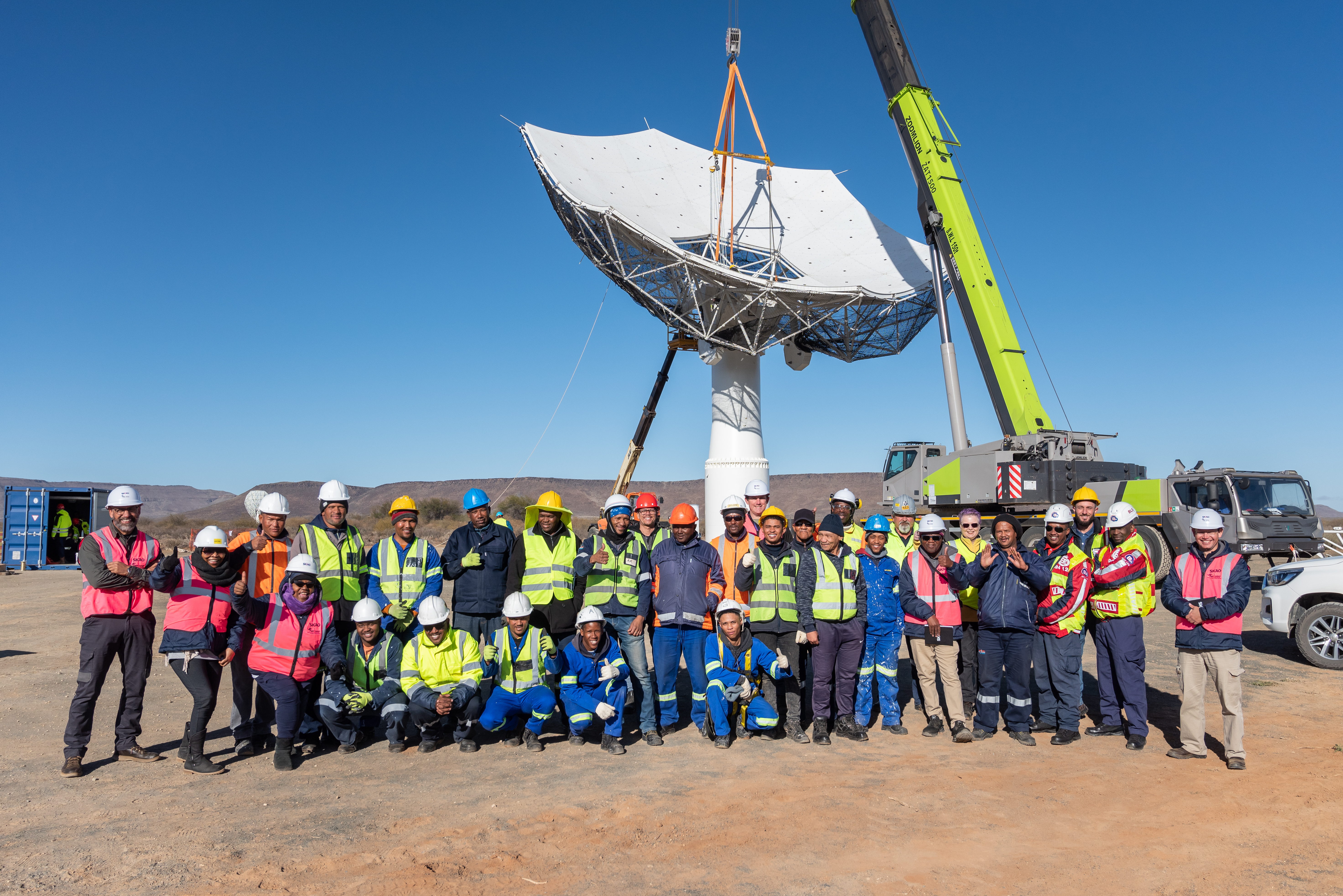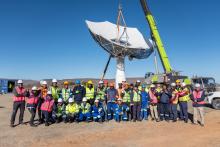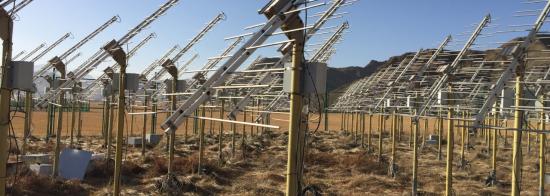First SKA-Mid dish takes shape in South Africa

The “big lift” of its 15-m-wide main reflector onto the telescope pedestal was performed by a team from the SKAO, the South African Radio Astronomy Observatory (SARAO) and China’s CETC54, which is manufacturing the dishes and also led the 10-country strong consortium behind their design.
Construction activity has accelerated at both of the SKAO’s telescope sites in the past year; March saw the rollout of the first SKA-Low telescope antennas in Western Australia.
“The progress this year across the Observatory has been amazing, and seeing the first SKA-Mid dish being erected is a significant moment as we head towards the first stage of telescope delivery,” said SKAO Acting Director of Programmes Luca Stringhetti.
“There have been challenges, as we anticipated there would be, but it is thanks to the coordinated effort and support of our partners across the globe, combined with significant logistical work by teams at the telescope sites and our HQ, that we have been able to deploy the first dish structure and four stations on the ground in both of our telescope host countries.”
SKA-Mid’s 197 dishes will stretch across 150 km in the Northern Cape province, and cover a wide frequency range, from 350 MHz to 15.4 GHz, with a goal of up to 24 GHz in the future. They can operate as a whole or as sub-arrays, and will enable a wide range of science, from studying transient events such as fast radio bursts, to making detailed studies of the gas distribution within galaxies and detecting the complex organic molecules that can form the building blocks of life.
"CETC54 is excited and deeply proud to be part of installing the first SKA-Mid dish in South Africa, which is set to operate for over 50 years. Since its conception, the SKA project has embodied the collective aspirations and efforts of many institutions in the pursuit of cosmic exploration,” said Wang Dawei, SKA-Mid Dish Project Manager at CETC54.
“The precise installation of the main reflector is just the first step, and we will continue to implement high-precision measurement adjustments and accurate calibration on the antennas, in order to deliver the dishes to the SKAO’s exacting quality standards.”
Both SKA telescopes are being rolled out in a phased manner. This strategy means the SKAO can deliver the most effective instruments possible at each stage, leading towards the full realisation of the Observatory, and manage the wide range of challenges encountered along the way. The dish now being completed is one of four that will comprise the first stage of SKA-Mid delivery, known as Array Assembly 0.5 (AA0.5). This allows for testing and a process review to take place prior to full-scale dish production.
“As a team we are now totally focused on the next stage of activities because we have already got two more dish structures on site, ready for assembly,” said SKA-Mid Site Construction Director Tracy Cheetham. “This is a complex environment, with many variables, but we are in a strong position to proceed with the next steps towards AA0.5.”
Other SKA-Mid components are being manufactured across numerous SKAO partner countries, including Italy, Spain, Sweden, the UK and South Africa, where the Stellenbosch-based EMSS Antennas, specialists in highly sensitive, cryogenically cooled receivers (or feeds), was awarded the construction contract for SKA-Mid’s band 2 receiver.
The next step for the first SKA-Mid dish will be to install the huge feed indexer which will position the receivers into place depending on the observation being undertaken.
“There’s a lot of work ahead of us, but for everyone involved, this is a special moment that represents years of toil by people all over the world, so I want to thank them for their dedication in getting us here. Special thanks must go to our partners at SARAO and CETC54 for their professionalism and commitment – this collaboration is really bearing fruit,” said SKA-Mid Senior Project Manager Ben Lewis.
“The first of anything is always the most challenging, and we have learnt a huge amount from a logistical and technical perspective from this first dish. That will inform our planning going forward as we prepare to deliver a four-dish array early next year, before ramping up to ‘full speed’ construction later in 2025.”
Across the Indian Ocean in Australia, SKA-Low telescope construction is progressing rapidly. Four of the telescope’s 512 stations have now been built, meaning more than 1,000 of its two-metre-tall antennas have been assembled and installed by the field technicians on site at Inyarrimanha Ilgari Bundara, the CSIRO Murchison Radio-astronomy Observatory, on Wajarri Yamaji Country. The telescope will eventually comprise 131,072 antennas when complete, and complement SKA-Mid by covering a frequency range from 50 MHz to 350 MHz.
The SKAO recognises and acknowledges the Indigenous peoples and cultures that have traditionally lived on the lands on which the SKAO facilities are located. In Australia, the SKAO acknowledges the Wajarri Yamaji as the Traditional Owners and native title holders of Inyarrimanha Ilgari Bundara, the CSIRO Murchison Radio-astronomy Observatory.





